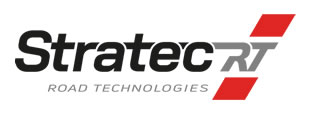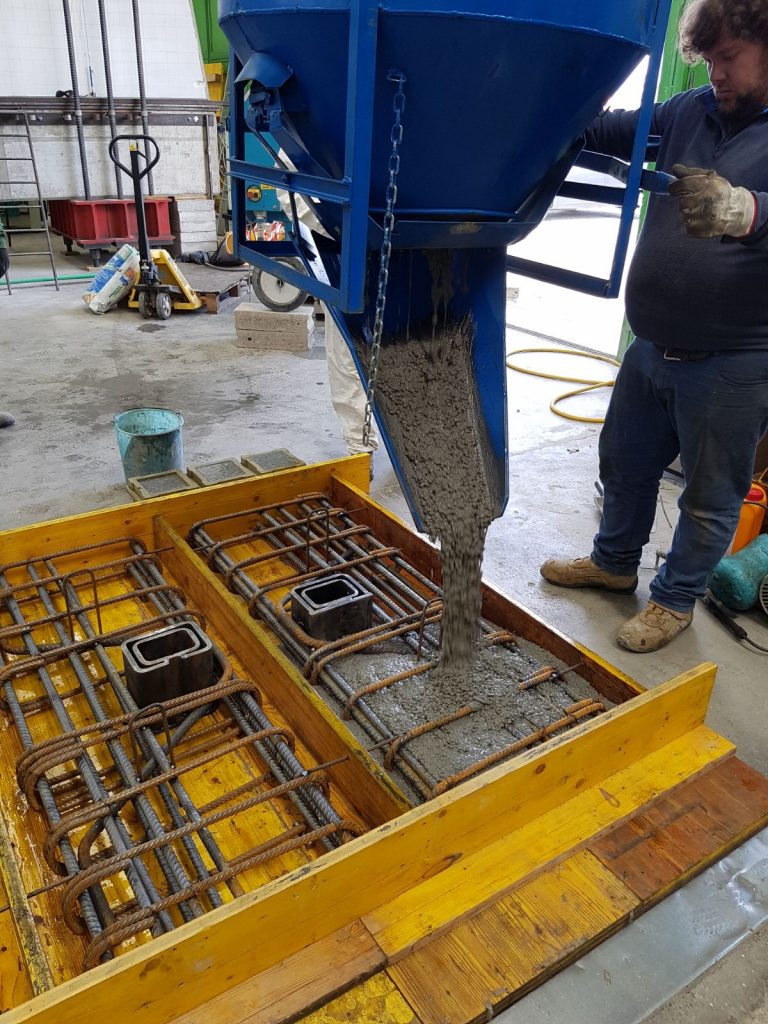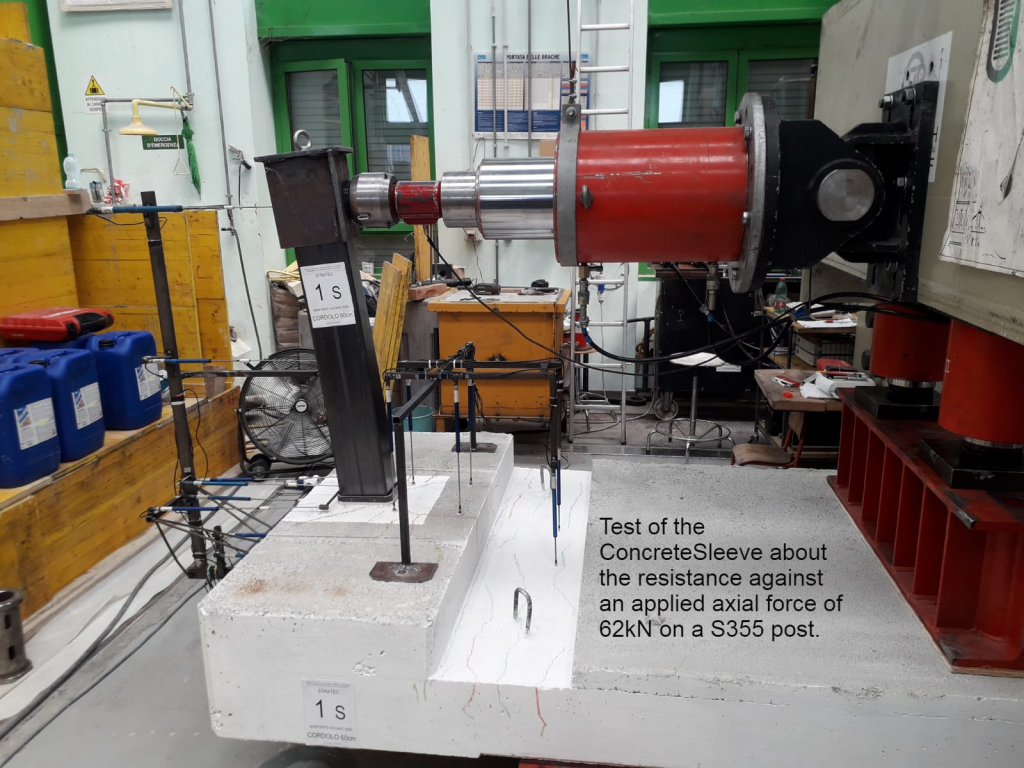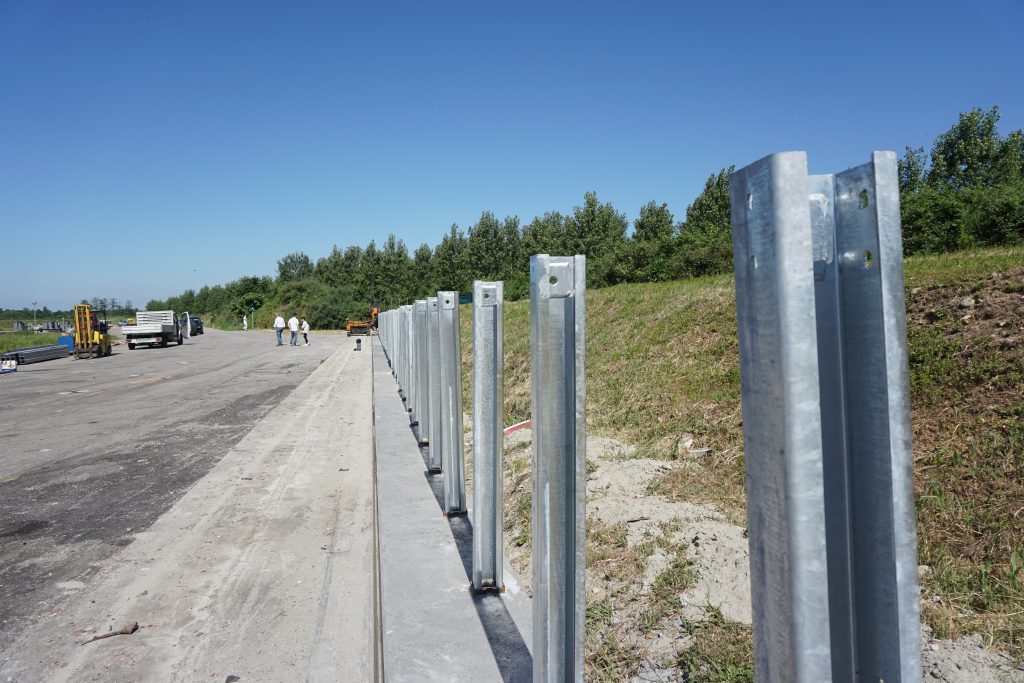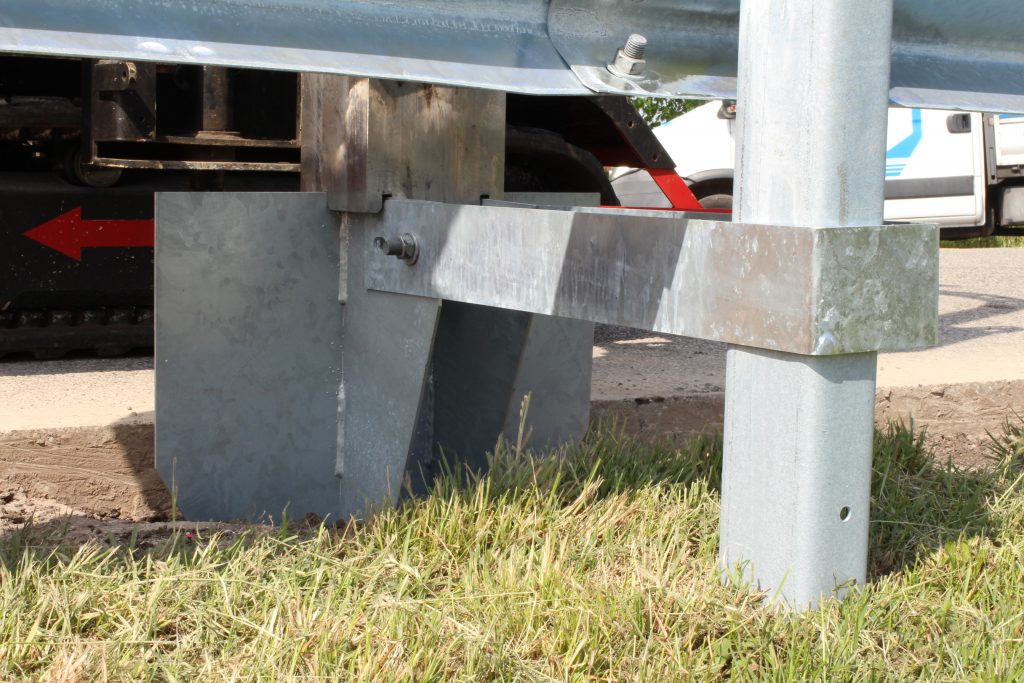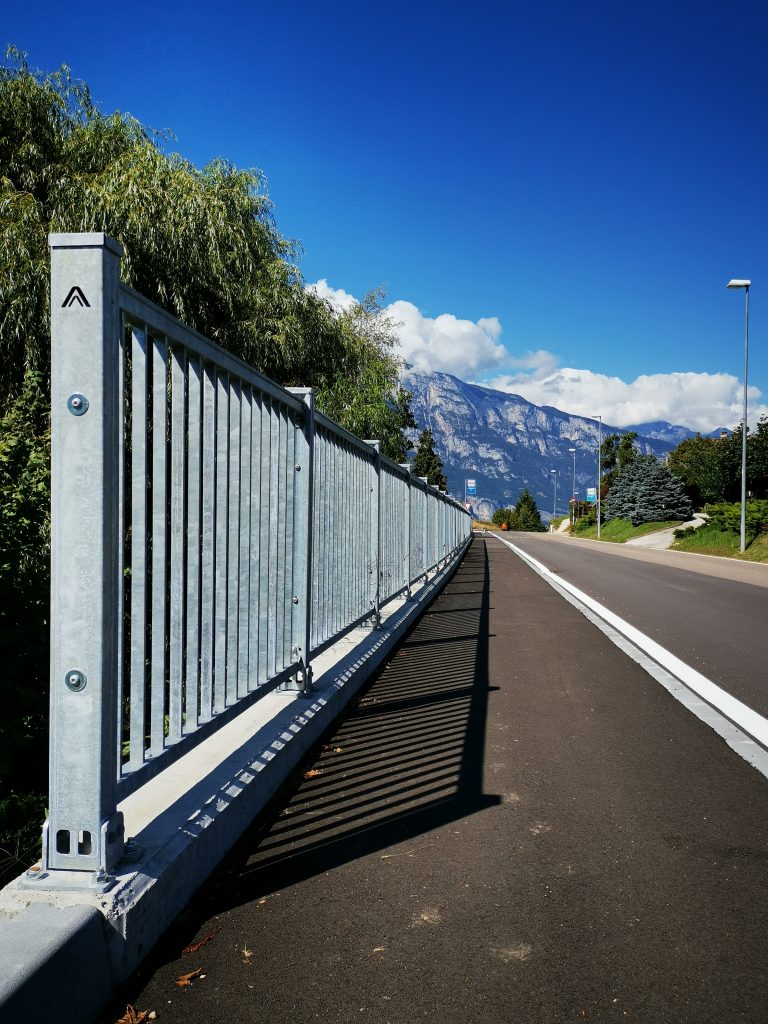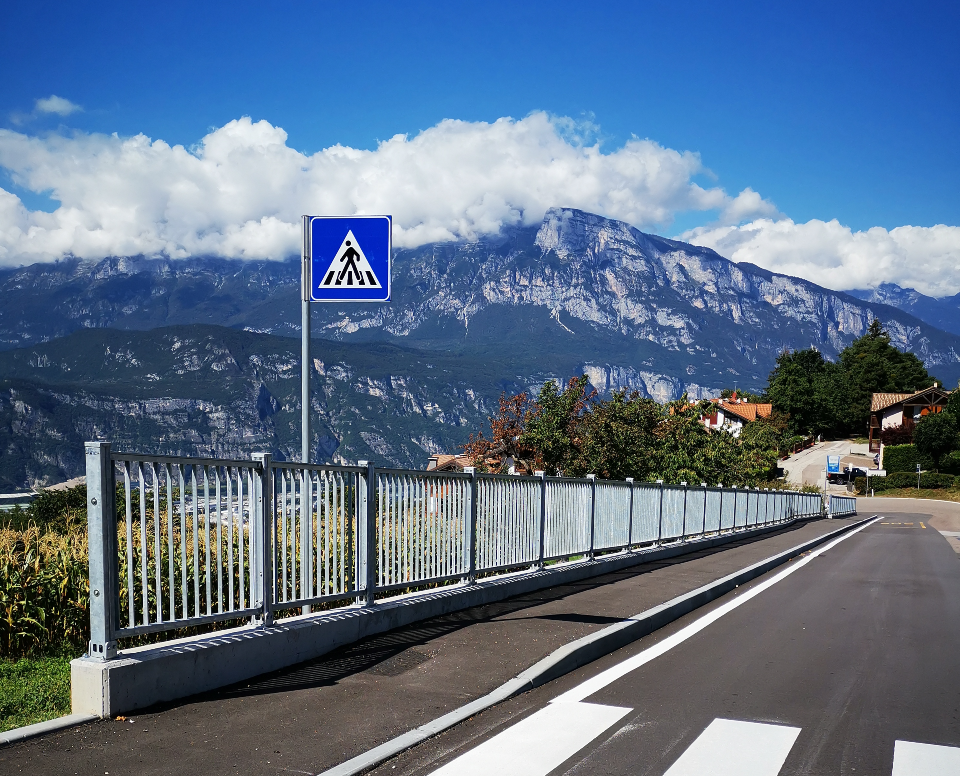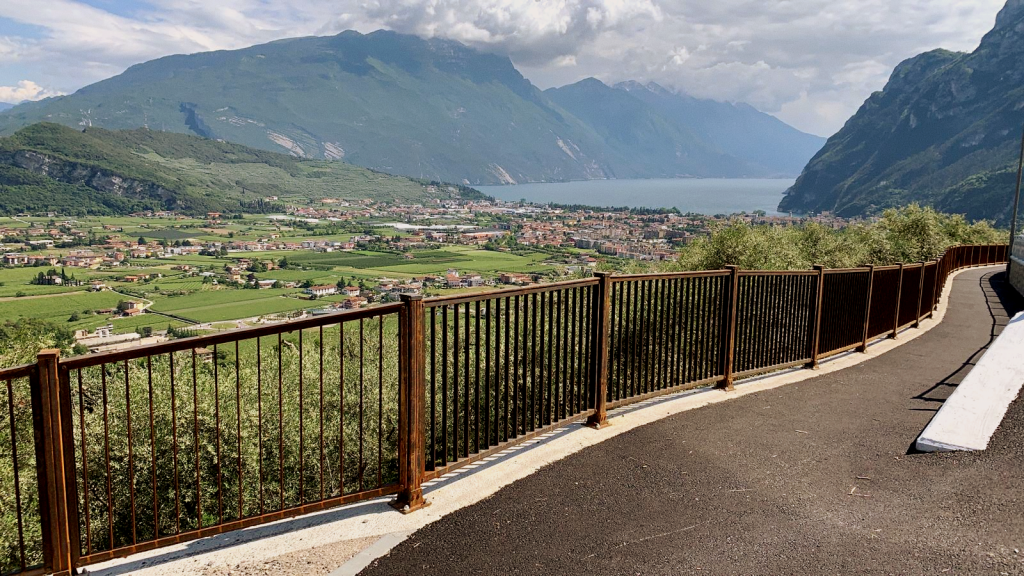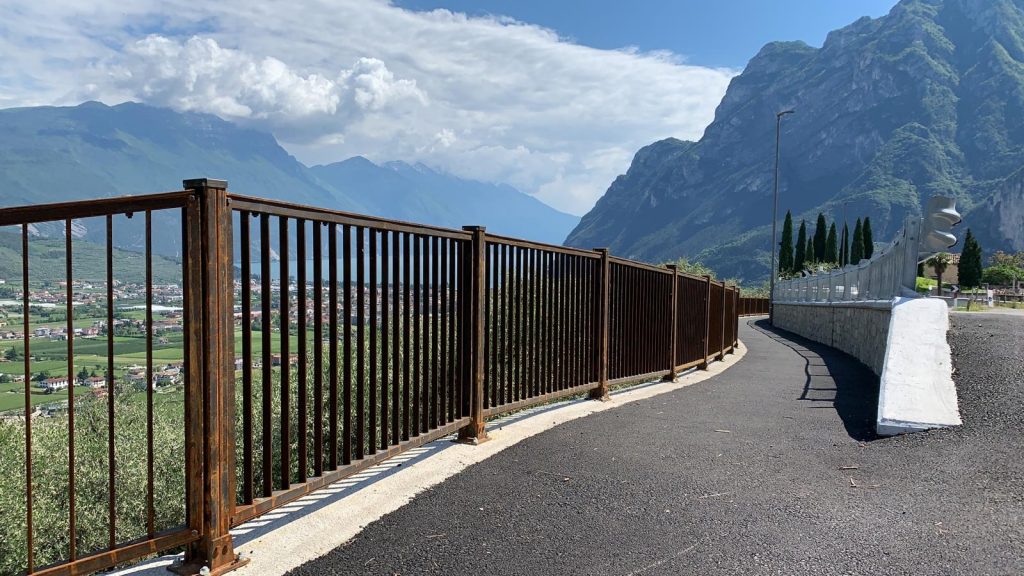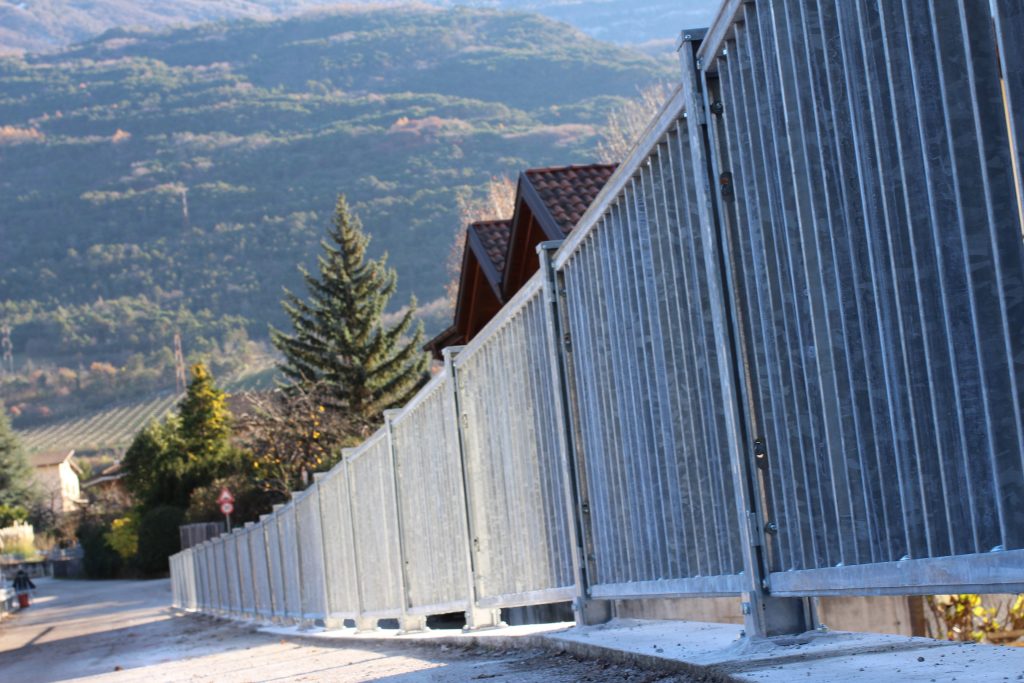The most important criticality is constituted by the constraint at the base of the barrier, or its connection point with the infrastructure or with the ground which determines the correct triggering of the delicate deformation mechanism and / or programmed breaking of the barrier system.
The Infrastructure Safety Regulations provide that road barriers, before they can be installed, must pass dynamic impact tests called Crash Tests.
EMBANKMENT (Terrain)
The widespread problem of barriers mounted on embankments is the difference between the mechanical properties of the soil at the installation site compared to the certification site (Crash Test). In the case of narrow embankments, the situation is further aggravated by the lack of terrain, which in turn does not allow the road barrier to function correctly. The posts, if not firmly fixed in the ground, following the impact of road vehicles, will tend to rotate rigidly instead of flexing and inducing a plastic deformation.

![]()
Potential displacement and / or rigid rotation of the post with the danger of the vehicle falling off the road
![]() Non-correspondence of the installation sites to the certification conditions during the Crash Test and consequently the impossibility of guaranteeing the overall performance of the barrier
Non-correspondence of the installation sites to the certification conditions during the Crash Test and consequently the impossibility of guaranteeing the overall performance of the barrier
![]()
Post-accident responsibility of the managing body and of the people involved in the project due to the malfunction of the guardrail system
![]()
The criticalities of the terrain on narrow embankments:
- General insufficiency and / or lack of soil;
- Non-homogeneity and non-correspondence of the embankments to the characteristics of the test field;
- Influence of environmental conditions in the duration of time (erosion and corrosion).
BRIDGE EDGE (Curb)
Guardrails are generally installed on structures by using flanges, anchor bolts and chemical adhesives (in some cases the poles are embedded directly into the concrete curb). This installation method, in addition to complex and expensive maintenance, particularly in post-accident reconstruction, does not always guarantee a reliable operation and consequently compliance with the certification conditions for various possible reasons:
![]() Difficulty in inserting the chemical anchored bolts during work execution (perpendicular hole, interference with reinforcing rods, necessity of accurate cleaning, shoice of type and quality of the anchor, with respect to hardening and polymerization times, etc.);
Difficulty in inserting the chemical anchored bolts during work execution (perpendicular hole, interference with reinforcing rods, necessity of accurate cleaning, shoice of type and quality of the anchor, with respect to hardening and polymerization times, etc.);
![]() Adaptation and compliance with installation methods and times according to weather conditions (relative humidity, rain / dry);
Adaptation and compliance with installation methods and times according to weather conditions (relative humidity, rain / dry);
![]() Possible interference of the reinforcing rods with the holes for the anchor bolts;
Possible interference of the reinforcing rods with the holes for the anchor bolts;
![]() High and repetitive installation costs in case of post-accident maintenance work (reconstruction of the curb and re-insertion of flange and anchor bolts)
High and repetitive installation costs in case of post-accident maintenance work (reconstruction of the curb and re-insertion of flange and anchor bolts)




